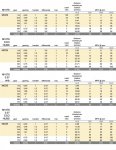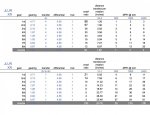- 2,597
- 6,224
- 113
- Location
- Portland, OR
Can you provide any links with information on the fluid dynamics that contra-indicate use of antifreeze (mixed with water) for balancing? I'm certainly interested to read about it given that my tires are full of the stuff alreadyNot to offend those who do/did...
Not in a MILLION years.
As ballast for a farm tractor to help keep the vehicle from tipping over, sure.
Beyond that, nope.
My reasons are based on fluid dynamics.
But if people "think" it helps, that's all that matters.
*and if you do, dilute that shit good (it can be caustic)
Anti-freeze contains corrosion inhibitors as well as zinc as a sacrificial anode. It's not just straight Ethelene Glycol. I'm pretty familiar with it's use and what it will and wont corrode generally. I'm not worried about my powder coated rims which are effectively plastic. And I'm of the opinion that it's not going to be an issue till long after I need new tires due to age anyway.
Ethelene Glycol should have zero effect on the inside surface of tires. The inner surface is Butyl Rubber due to it's very low permeability (holds air), and is 100% compatible with EG. I've posted videos before of reported anti-freeze used in tires for 10 years with seemingly zero effect on the Butyl.



